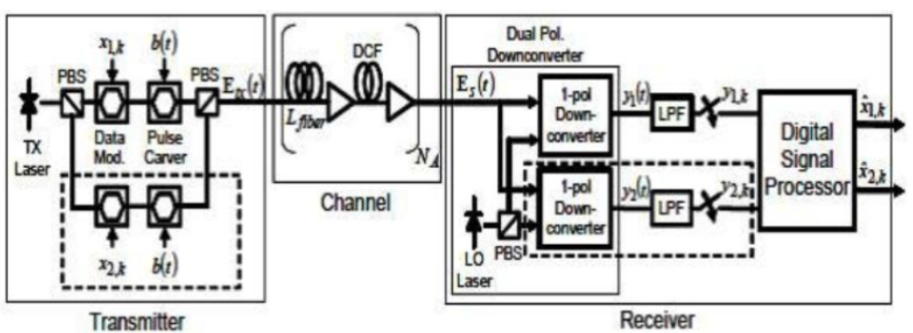Do you know the Application of 100G/200G coherent optical module in metropolitan area network and core network?
In the field of optical communication, larger bandwidth, longer transmission distance, and higher receiving sensitivity are always the pursuit goals of researchers. With the application of communication technologies such as video conferencing and the explosion of information generated by the popularization of the Internet, higher transmission performance requirements have been put forward for the physical layer, which is the basis of the entire communication system. Driven by strong demand, large-scale laying of
DWDM systems It is gradually exhausting its wavelength resources, and there is also a big technical bottleneck to improve the efficiency of time division multiplexing (TDM) systems by compressing optical pulses. Against this backdrop, seemingly forgotten coherent systems have once again attracted attention.
The theory and experiment of coherent optical communication began in the 1980s. The coherent optical communication system was recognized as having the advantage of high sensitivity. Countries have done a lot of research on coherent optical transmission: due to the development of EDFA and WDM technology, the research on coherent optical communication was once develop slowly. However, with the passage of time, many problems have made it attract widespread attention again. In terms of digital communication, how to expand the capacity of C-band amplifiers, overcome the deterioration of fiber dispersion effects, and increase the capacity and range of free-space transmission has become a great progress made by researchers in optical devices, such as lasers. Output power, linewidth, stability and noise, as well as photodetector bandwidth, power handling, and common-mode rejection ratio have all been greatly improved, as have the performance of microwave electronics. These advances make it possible to commercialize coherent optical communication systems.
Under the new historical opportunity, Some company are determined to forge ahead. In the research field of coherent optical communication, it has independently developed the single LambdaCFP-DCO100G coherent optical module, which uses DP-D/QPSK modulation technology to meet the full C-band ITU-T adjustable (50/100GHz) standard 100GE interface (customizable OUT4) conforms to CFP-MSA protocol, which is convenient for users to directly access existing equipment: customized research and development for data center interconnection (DCI), metropolitan area network applications, transmission distance (~100Km), Support P2P and DWDM transmission. Silicon photonics technology is used to integrate optimized solutions to meet low-power applications (~22W) and fully guarantee performance, and can provide customizable system solutions according to application scenarios.
100G coherent optical module belongs to the technical research field of
100GDWDM long-distance transmission. It is mainly used for line-side optical transmission of 100G wavelength division system. Compared with other various forms of line-side optical modules, it has good OSNR performance, sensitivity and dispersion tolerance. , DGD tolerance, so it has become a common choice in the industry. Its key technologies mainly include DP-QPSK modulation technology, coherent detection technology and DSP processing technology, etc. The advantages and disadvantages of system performance are mainly reflected in CD, PMD tolerance, ONSR and nonlinear effects.


